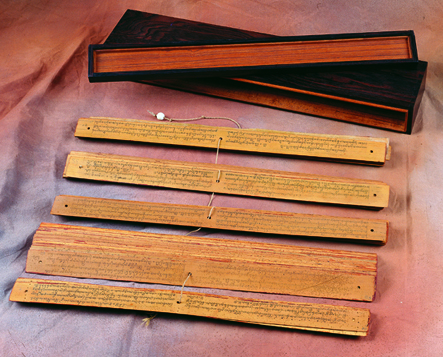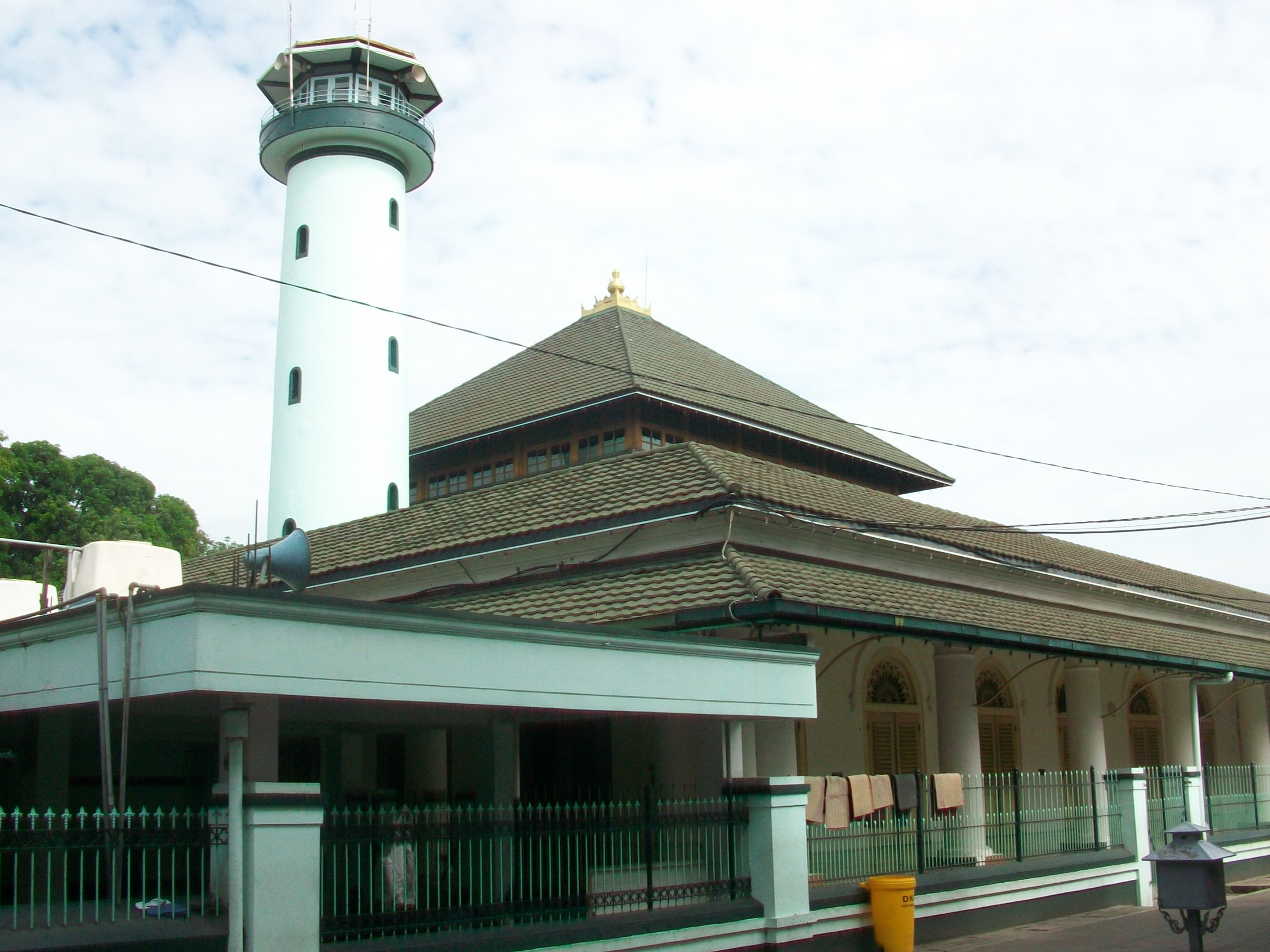|
Jayakatwang
Jayakatwang (died c.1293) was the king of short-lived second Kingdom of Kediri (also known as Gelang-Gelang Kingdom) of Java, after his overthrow of Kertanegara, the last king of Singhasari. He was eventually defeated by Raden Wijaya, Kertanegara's son-in-law using the troops of the Mongol Yuan dynasty that were invading Java. Raden Wijaya would later turn against the Mongols and found Majapahit, a great empire centered around Java. Background Since 1271, Jayakatwang was viceroy (or governor) of Kediri, a vassal state of Singhasari. Kediri was formerly the dominant kingdom in Java until overthrown in 1222 by Ken Arok, the first king of Singhasari. Jayakatwang was probably a descendant of the Kediri royal line, and thus held ambition to restore his line to power and rulership of Java. His name is derived from Sanskrit '' Jaya'' (''victory'') and Javanese ''ketawang'' (''rising, or appearing''). Kediri is located in a fertile rice-producing area on Brantas River banks, app ... [...More Info...] [...Related Items...] OR: [Wikipedia] [Google] [Baidu] |
Jayakatwang Rebellion
Jayakatwang rebellion was a rebellion that occurred in 1292, due to Jayakatwang's ambition to become king and past grudges where his ancestor, Kertajaya, was defeated by the ancestor of Kertanagara, Ken Arok. Various Old Javanese records such as ''Nagarakretagama, Pararaton, Kidung Harsawijaya,'' and ''Kidung Panji Wijayakrama'' mention that Jayakatwang was a subordinate king in Kadiri who rebelled against Kertanagara's power in Singhasari. Background After Singhasari defeating Melayu Kingdom, Malayu Dharmasraya in Sumatra in 1290, Singhasari became the most powerful kingdom in the region. Kertanegara sent a massive army to Sumatra in the Pamalayu campaign. However, seizing the opportunity of the lack of an army guarding the capital, in 1292, Jayakatwang, the Duke of Kediri Kingdom, Kediri (Gelang-gelang), a vassal state of Singhasari, revolted against Kertanegara. Jayakatwang's revolt was assisted by Kertanegara's former close friend, Banyak Wide (also known by his title Aria W ... [...More Info...] [...Related Items...] OR: [Wikipedia] [Google] [Baidu] |
Mongol Invasion Of Java
The Yuan dynasty under Kublai Khan attempted in 1293 to invade Java, an island in modern Indonesia, with 20,000 to 30,000 soldiers. This was intended as a punitive expedition against Kertanegara of Singhasari, who had refused to pay tribute to the Yuan and maimed one of their emissaries. However, in the intervening years between Kertanegara's refusal and the expedition's arrival on Java, Kertanegara had been killed and Singhasari had been usurped by Kediri Kingdom, Kediri. Thus, the Yuan expeditionary force was directed to obtain the submission of its successor state, Kediri Kingdom, Kediri, instead. After a fierce campaign, Kediri surrendered, but the Yuan forces were betrayed by their erstwhile ally, Majapahit, under Raden Wijaya. In the end, the invasion ended with Yuan failure and strategic victory for the new state, Majapahit. Background Kublai Khan, Kublai, the founder of the Yuan dynasty, had sent envoys to many states demanding that they pay tributes and submit themselve ... [...More Info...] [...Related Items...] OR: [Wikipedia] [Google] [Baidu] |
Kediri Kingdom
Kediri Kingdom or Kadiri, also known as Panjalu, was a Hindu-Buddhist Javanese people, Javanese kingdom based in East Java from 1042 until 1222 (1292–1293 under Jayakatwang). This kingdom is centered in the ancient city ''Dahanapura'', despite the lack of archaeological remains, the age of Kediri saw much development in classical literature. Mpu Sedah's ''Kakawin Bharatayuddha'', Mpu Panuluh's ''Gatotkacasraya'', and Mpu Dharmaja's ''Smaradhana'' blossomed in this era. The kingdom's capital is believed to have been established in the western part of the Brantas River valley, somewhere near modern Kediri (city), Kediri city and surrounding Kediri Regency. Etymology and names The city of :id:Daha, Daha existed before the founding of the kingdom. Daha is an abbreviation of ''Dahanapura'', which means ''city of fire''. This name is listed in the Pamwatan inscription issued by Airlangga in 1042. This is following the news in ''Calon Arang, Serat Calon Arang'', that at the end o ... [...More Info...] [...Related Items...] OR: [Wikipedia] [Google] [Baidu] |
Kingdom Of Kediri
Kediri Kingdom or Kadiri, also known as Panjalu, was a Hindu-Buddhist Javanese kingdom based in East Java from 1042 until 1222 (1292–1293 under Jayakatwang). This kingdom is centered in the ancient city ''Dahanapura'', despite the lack of archaeological remains, the age of Kediri saw much development in classical literature. Mpu Sedah's '' Kakawin Bharatayuddha'', Mpu Panuluh's ''Gatotkacasraya'', and Mpu Dharmaja's '' Smaradhana'' blossomed in this era. The kingdom's capital is believed to have been established in the western part of the Brantas River valley, somewhere near modern Kediri city and surrounding Kediri Regency. Etymology and names The city of Daha existed before the founding of the kingdom. Daha is an abbreviation of ''Dahanapura'', which means ''city of fire''. This name is listed in the Pamwatan inscription issued by Airlangga in 1042. This is following the news in '' Serat Calon Arang'', that at the end of Airlangga's reign, the center of the kingdo ... [...More Info...] [...Related Items...] OR: [Wikipedia] [Google] [Baidu] |
Singhasari
Singhasari ( or , ), also known as Tumapel, was a Javanese people, Javanese Hindu-Buddist empires, Hindu-Buddhist Monarchy, kingdom located in east Java (island), Java between 1222 and 1292. The kingdom succeeded the Kingdom of Kediri as the dominant kingdom in eastern Java. The kingdom's name is cognate to the Singosari district of Malang Regency, located several kilometres north of Malang City. Etymology Singhasari (alternate spelling: ''Singosari'') was mentioned in several Javanese manuscripts, including Pararaton. According to tradition, the name was given by Ken Arok during the foundation of the new kingdom to replace its old name, Tumapel, located in a fertile highland valley which today corresponds to the area in and around Malang city. It derives from Sanskrit word ''singha'' which means "lion" and ''sari'' which in Old Javanese could mean either "essence" or "to sleep". Thus Singhasari could be translated as "essence of lion" or "sleeping lion". Although the asiati ... [...More Info...] [...Related Items...] OR: [Wikipedia] [Google] [Baidu] |
Kertanegara
Sri Maharajadiraja Sri Kertanagara Wikrama Dharmatunggadewa, Kritanagara, or Sivabuddha (died 1292), was the last and most important ruler of the Singhasari kingdom of Java, reigning from 1268 to 1292. Under his rule Javanese trade and power developed considerably, reaching the far corners of the Indonesian archipelago. Background Kertanagara was the fifth ruler of Singasari and was the son of the previous king, Wisnuwardhana (r. 1248–1268). He effectively held power from 1254 and officially succeeded his father when the latter died in 1268. The Singasari dynasty had come to power in Java following the overthrow of the previous Kediri Kingdom by Ken Arok, the first Singhasari ruler in 1222. Kertanagara was a follower of a mystical Tantric syncretism of Hinduism and Buddhism, and presented himself as the divine god-king incarnation of Shiva and Buddha. Kertanagara celebrated many religious festivals and commissioned sculptures and metal plaques during his reign. Conques ... [...More Info...] [...Related Items...] OR: [Wikipedia] [Google] [Baidu] |
Raden Wijaya
Raden Wijaya or Raden Vijaya, also known as Nararya Sangramawijaya and his regnal name Kertarajasa Jayawardhana was a Javanese emperor and founder of the Majapahit Empire who ruled from 1293 until his death in 1309.Slamet Muljana, 2005, ''Runtuhnya Kerajaan Hindu-Jawa dan Timbulnya Negara-negara Islam di Nusantara'', Yogyakarta: LKiS, . The history of his founding of Majapahit was written in several records, including Pararaton and Negarakertagama. His rule was marked by the victory against the army and the Mongol navy of Kublai Khan's Yuan dynasty. Ancestry There are several versions of his ancestry. According to Pararaton, Raden Wijaya was the son of Mahisa Campaka, prince of Singhasari. Mahisa Campaka alias Narasingamurti is the son of Mahisa Wonga Teleng. Meanwhile, Mahisa Wonga Teleng was the son of Ken Arok, founder of the Rajasa dynasty. According to later controversial source from 17th century, Pustaka Rajyarajya i Bhumi Nusantara, Raden Wijaya was the son of Rakey ... [...More Info...] [...Related Items...] OR: [Wikipedia] [Google] [Baidu] |
Majapahit
Majapahit (; (eastern and central dialect) or (western dialect)), also known as Wilwatikta (; ), was a Javanese people, Javanese Hinduism, Hindu-Buddhism, Buddhist thalassocracy, thalassocratic empire in Southeast Asia based on the island of Java (in modern-day Indonesia). At its greatest extent, following significant military expansions, the territory of the empire and its tributary states covered almost the entire Nusantara (term), Nusantara archipelago, spanning both Asia and Oceania. After a Regreg war, civil war that weakened control over the vassal states, the empire slowly declined before collapsing in 1527 due to an Demak–Majapahit conflicts, invasion by the Demak Sultanate, Sultanate of Demak. The fall of Majapahit saw the rise of History of Indonesia#Islamic civilizations, Islamic kingdoms in Java. Established by Raden Wijaya in 1292, Majapahit rose to power after the Mongol invasion of Java and reached its peak during the era of the queen Tribhuwana Wijayatungga ... [...More Info...] [...Related Items...] OR: [Wikipedia] [Google] [Baidu] |
Kertajaya
Kertajaya or Srengga also called Dandhang Gendhis was the last king of the Kediri Kingdom who ruled around 1194–1222. At the end of his reign he declared that he wanted to be worshiped as a god. Kertajaya was killed by Ken Arok from Tumapel or Singhasari, which ended the period of the Kediri Kingdom. Ken Arok's Rebellion In ''Pararaton'' Maharaja Kertajaya is called by the name Prabu Dandhang Gendis. It is said that at the end of his reign the stability of the Kediri Kingdom began to decline. This condition was because the king intended to reduce the rights of the Brahmins. The king said he wanted to be worshiped as a god. The request of Prabu Dandhang Gendis certainly met resistance from the priests and the Hindu and Buddhist priests and Brahmins. Although Prabu Dandhang Gendis showed his magic by sitting cross-legged on a sharp spear that stood up. Some people who did not recognize Kertajaya's divinity had to be cruelly tortured to death. Meanwhile, those who acknowledge th ... [...More Info...] [...Related Items...] OR: [Wikipedia] [Google] [Baidu] |
East Java
East Java (, , ) is a Provinces of Indonesia, province of Indonesia located in the easternmost third of Java island. It has a land border only with the province of Central Java to the west; the Java Sea and the Indian Ocean border its northern and southern coasts, respectively, while the narrow Bali Strait to the east separates Java from Bali by around . Located in eastern Java (island), Java, the province also includes the island of Madura Island, Madura (which is connected to Java by the longest bridge in Indonesia, the Suramadu Bridge), as well as the Kangean Islands, Kangean islands and other smaller island groups located further east (in the northern Bali Sea) and the Masalembu Islands, Masalembu archipelago to the north. Its capital is Surabaya, the Largest cities in Indonesia, second largest city in Indonesia, a major industrial center and also a major business center. Banyuwangi is the largest regency in East Java and the largest on the island of Java. The province cover ... [...More Info...] [...Related Items...] OR: [Wikipedia] [Google] [Baidu] |
Great Khan
Khagan or Qaghan ( Middle Mongol:; or ''Khagan''; ) or zh, c=大汗, p=Dàhán; ''Khāqān'', alternatively spelled Kağan, Kagan, Khaghan, Kaghan, Khakan, Khakhan, Khaqan, Xagahn, Qaghan, Chagan, Қан, or Kha'an is a title of imperial rank in Turkic, Mongolic, and some other languages, equal to the status of emperor and someone who rules a khaganate (empire). The female equivalent is Khatun. It may also be translated as " Khan of Khans", equivalent to King of Kings. In Bulgarian, the title became known as ''Khan'', while in modern Turkic, the title became ''Khaan'' with the ''g'' sound becoming almost silent or non-existent; the ''ğ'' in modern Turkish ''Kağan'' is also silent. After the division of the Mongol Empire, monarchs of the Yuan dynasty and the Northern Yuan held the title of ''Khagan''. ''Kağan, Hakan'' and ''Kaan'', Turkish equivalents of the title are common Turkish names in Turkey. The common western rendering as Great Khan (or ''Grand Khan'') ... [...More Info...] [...Related Items...] OR: [Wikipedia] [Google] [Baidu] |





